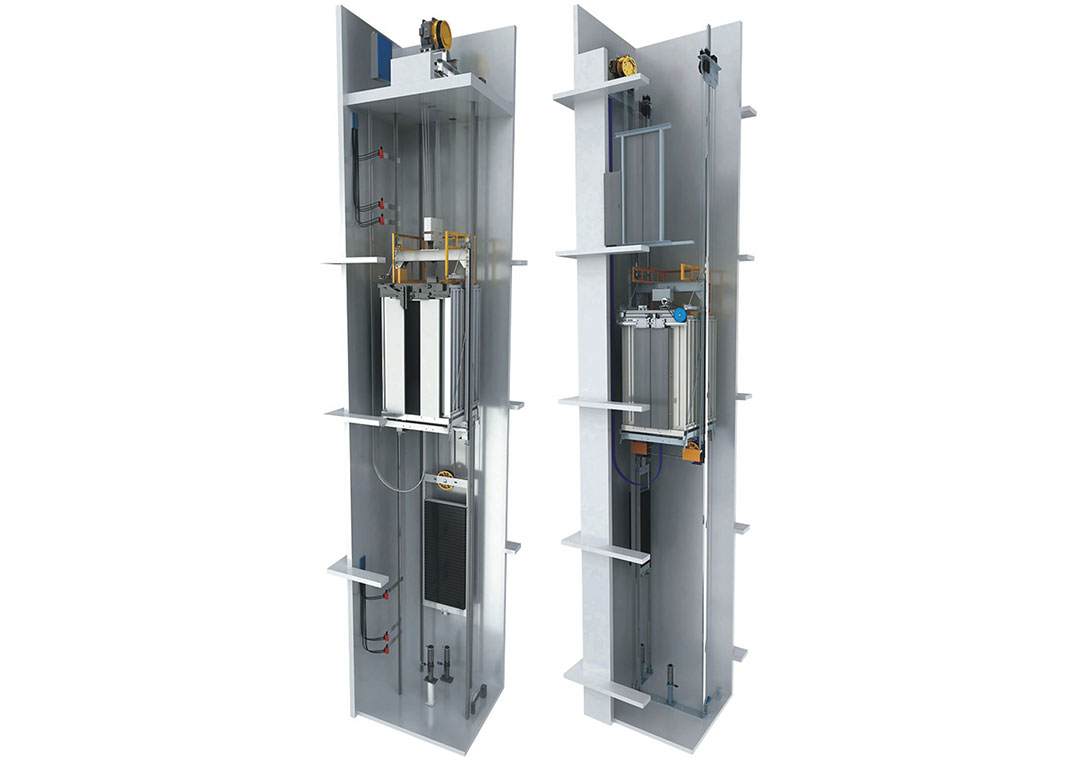Ensuring the multiple safety of passenger elevators, especially in high-frequency use scenarios, is a comprehensive engineering challenge that requires systematic optimization from multiple aspects such as design, technology application, maintenance management and emergency measures. The following is a detailed analysis of specific measures and methods:
Equipped with an efficient safety clamp device, it can quickly brake and fix the car on the guide rail when the elevator descends at an overspeed or the traction rope breaks.
Even if the main braking system fails, the backup braking system can still work normally to ensure multiple safety.
Continuously monitor the elevator running speed, and once it exceeds the speed, immediately trigger the safety clamp and stop the elevator operation.
Adopt the dual protection of mechanical speed limiter and electronic speed sensor to ensure that even if the electronic system fails, the mechanical protection is still effective.
Ensure that the elevator car door and landing door will not run if they are not completely closed.
Install infrared induction protection or light curtain sensor: detect whether there is an object blocking the car door to prevent passengers from being pinched.
Real-time detection of elevator speed, load, door status, running time and other data. Centrally manage multiple elevators through the cloud platform to detect potential problems in advance and arrange maintenance.
Using AI algorithms and big data analysis, predictive maintenance is performed on the operating status of key elevator components (such as traction machines, cables, and brake systems) to avoid sudden failures.
Regularly perform flaw detection on the elevator's brake system and wire rope to ensure its stability under high-frequency use.
In the event of a sudden power outage, the elevator can run to the nearest floor and open the door through the backup power supply to ensure the safe evacuation of passengers.

Passengers can contact the duty personnel or maintenance personnel at any time, such as intercoms or emergency call buttons. When the elevator is operating abnormally, the maintenance department is automatically notified and the emergency plan is activated.
When the elevator stops operating, it can automatically adjust to the nearest floor and open the door without manual intervention.
The traction machine and wire rope are made of high-strength, fatigue-resistant materials to withstand the stress of high-frequency operation.
The design of the car and guide rails meets the high-load standard to ensure stable operation under high load.
In a high-frequency use environment, an efficient heat dissipation device is configured for the elevator system to avoid electrical system failures due to temperature rise.
When the elevator load exceeds the rated load, the system will sound an alarm and prohibit operation.
Develop a strict regular maintenance plan, including a comprehensive inspection of key components such as brakes, speed limiters, wire ropes, and door systems.
Improve maintenance efficiency and reduce downtime during high-frequency use through intelligent maintenance systems.
Regularly train elevator operators and maintenance personnel to ensure that they are familiar with the latest safety operating procedures and emergency measures.
Carry out elevator safety education for users (such as building managers or residents) to reduce safety hazards caused by improper operation.
Design elevators with higher load capacity and faster response speed in places with large traffic flow, such as airports and shopping malls. Dynamically adjust the elevator operation frequency to adapt to different traffic needs.
Introduce double-deck cars or partitioned operation systems to reduce waiting time and stop frequency on high floors.
Use wind pressure resistance design to reduce vibration and noise caused by airflow during high-speed operation and improve operation stability.
Through multiple guarantees of core safety devices, the application of intelligent monitoring technology, the design of strengthening high-frequency use scenarios, and a complete maintenance management system, Passenger Elevators can maintain a high level of safety and reliability in high-frequency use scenarios. Continuous innovation and optimization will further meet the needs of modern buildings for efficient and safe operation of passenger elevators.











